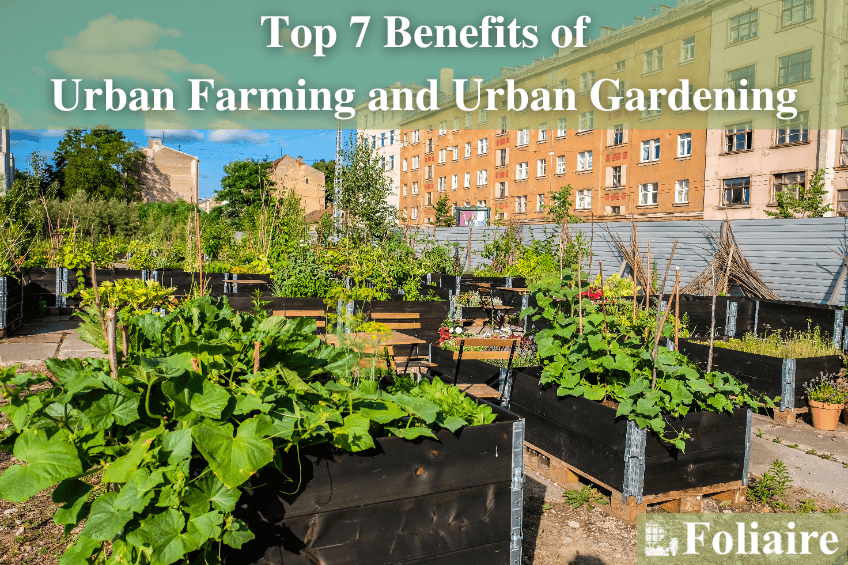How City Blooming can Save You Time, Stress, and Money.
How City Blooming can Save You Time, Stress, and Money.
Blog Article
All about City Blooming
Table of ContentsCity Blooming Things To Know Before You BuyOur City Blooming DiariesSome Known Details About City Blooming The Greatest Guide To City BloomingCity Blooming for Beginners
Fascinated in growing food for sale in the City of Chicago? Below is a listing of frequently asked concerns pertaining to the regulations and regulations that growers ought to take into consideration when preparing a city farming job.
The zoning modification does not customize any type of various other codes taking care of composting, structure authorizations, purchasing or leasing City had home, service licenses or ecological contamination. There are existing codes that control these problems and they stay completely effect and may be applicable to your project. Community yards are typically owned or managed by public entities, public companies or community-based organizations and preserved by volunteers.
Urban ranches expand food that is planned to be offered, either on a not-for-profit or for-profit basis. Due to their industrial purpose, city ranches need a company license.
City Blooming - Truths
The quantity of compost material can not surpass 25 cubic backyards at any provided time according to the criteria in 7-28-715 of the City's Municipal Code. Due to the fact that the soil at many new yard websites requires modifying, garden compost, soil, timber chips, or various other materials can be acquired to construct or enhance the growing space.

If a building authorization is required after that the hoophouse will certainly be thought about an accessory building. You can learn more regarding the building permit requirements by speaking to the Division of Structures. The 25,000-square-foot size limit is meant to stop a single neighborhood yard from dominating a provided block or interfering with the block's existing property or commercial personality.
The limitation does not apply to gardens situated in Public Open Room (POS) areas. Can there be more than one neighborhood garden that is 25,000 square feet on a solitary block? Yes. The size restriction relates to individual yards, not to private blocks. No. Fence is not required, however, gardens that have big parking lot may be required to mount fence or various other landscape design attributes.
Unknown Facts About City Blooming
B1 & B2 areas call for that all business usage tasks be performed inside your home. Is secure fencing required for city farms? Fences might be required, along with landscape design and screening, for certain parking locations and outside work or storage areas depending on area and the particular task taking area.
Urban farms need building permits and zoning approvals prior to construction (landscaping). Various other forms of city testimonial may be required depending on details structures, tasks, size, landscaping, licensing, public heath and stormwater monitoring concerns.
Yes. The kind of license is identified by what is happening at the site. The Department of Organization Affairs and Customer Protection can assist establish the particular kind of service permit our website that's needed. Yes. Off road car parking is needed for most industrial tasks in Chicago. The required variety of car parking spaces is based on the number of employees dealing with website and not the square footage of the growing area.
Getting My City Blooming To Work

Yes. A metropolitan ranch can offer garden compost product created on site, nevertheless, the operation needs to abide with the laws in 7-28-715 of the Chicago Municipal Code. Yes. Aquaponic systems are enabled inside on urban farms in several zoning districts. However, a zoning evaluation and structure permit is needed in order to mount structures or systems and a business license is needed as defined above.
As much as 5 hives or nests of honey might be kept as an accessory use. Beekeepers must sign up with the Illinois Division of Agriculture. To find out more about the proposed zoning amendment you might contact the Department of Real Estate and Economic Development, Bureau of Planning and Zoning at 312.744.8563.
Farming in cities and urban locations An urban ranch in Chicago. Urban agriculture describes different practices of cultivating. https://www.producthunt.com/@cityblooming11, processing, and distributing food in urban locations. The term additionally applies to the location activities of pet husbandry, aquaculture, beekeeping, and cultivation in a city context. Urban farming is differentiated from peri-urban farming, which happens in country areas at the side of suburban areas.
Fascination About City Blooming
It can include an activity of organic cultivators, "foodies" and "locavores", that look for to create social media networks founded on a shared ethos of nature and area holism. These networks can establish using official institutional support, ending up being integrated right into regional town as a "shift town" activity for lasting metropolitan growth.
The a lot more straight access to fresh vegetable, fruit, and meat products that might be become aware through city agriculture can improve food safety and security and food safety while reducing food miles, resulting in lower greenhouse gas exhausts, therefore contributing to environment adjustment mitigation. Several of the first evidence of metropolitan agriculture comes from Mesopotamia.
Report this page